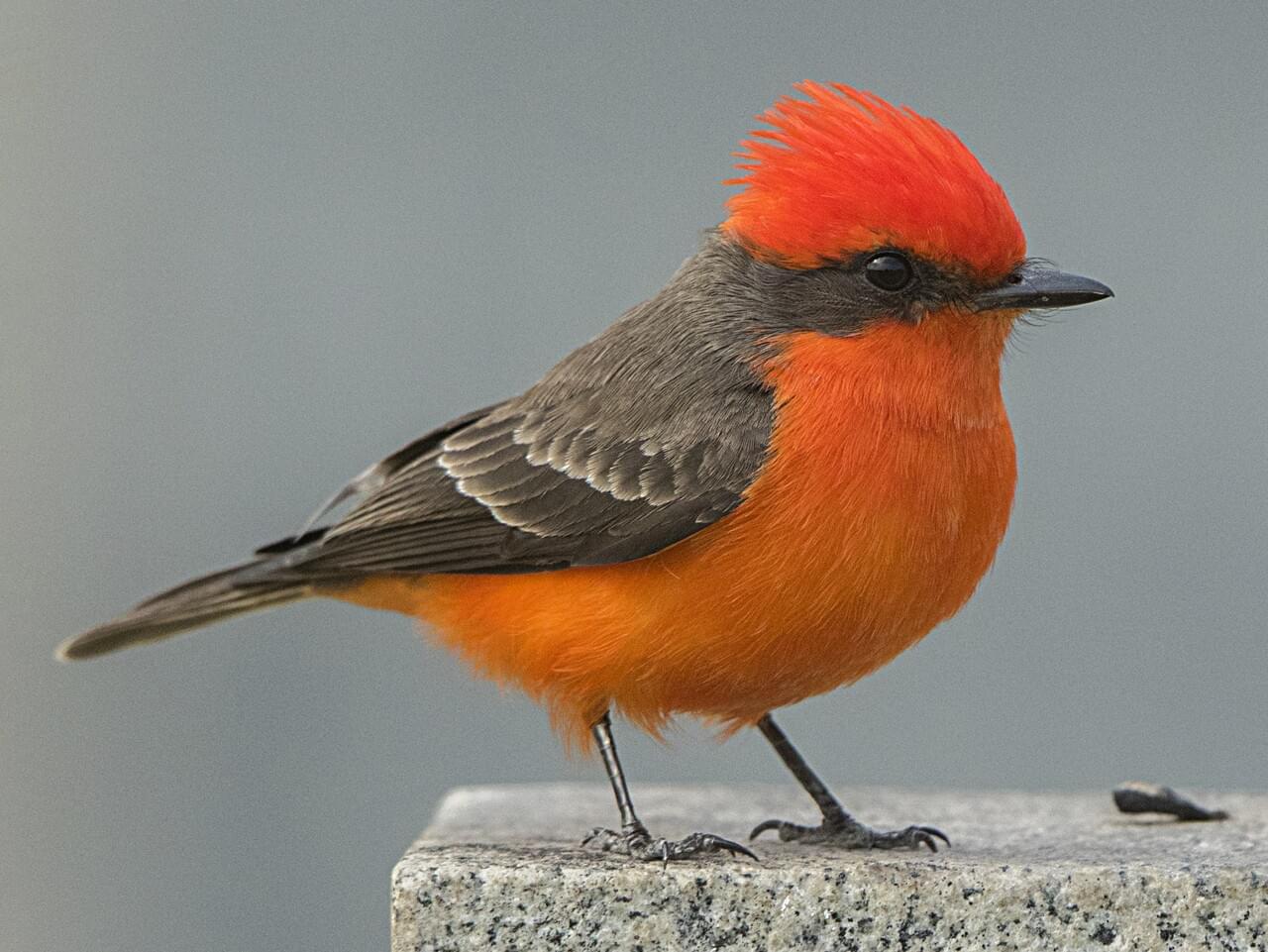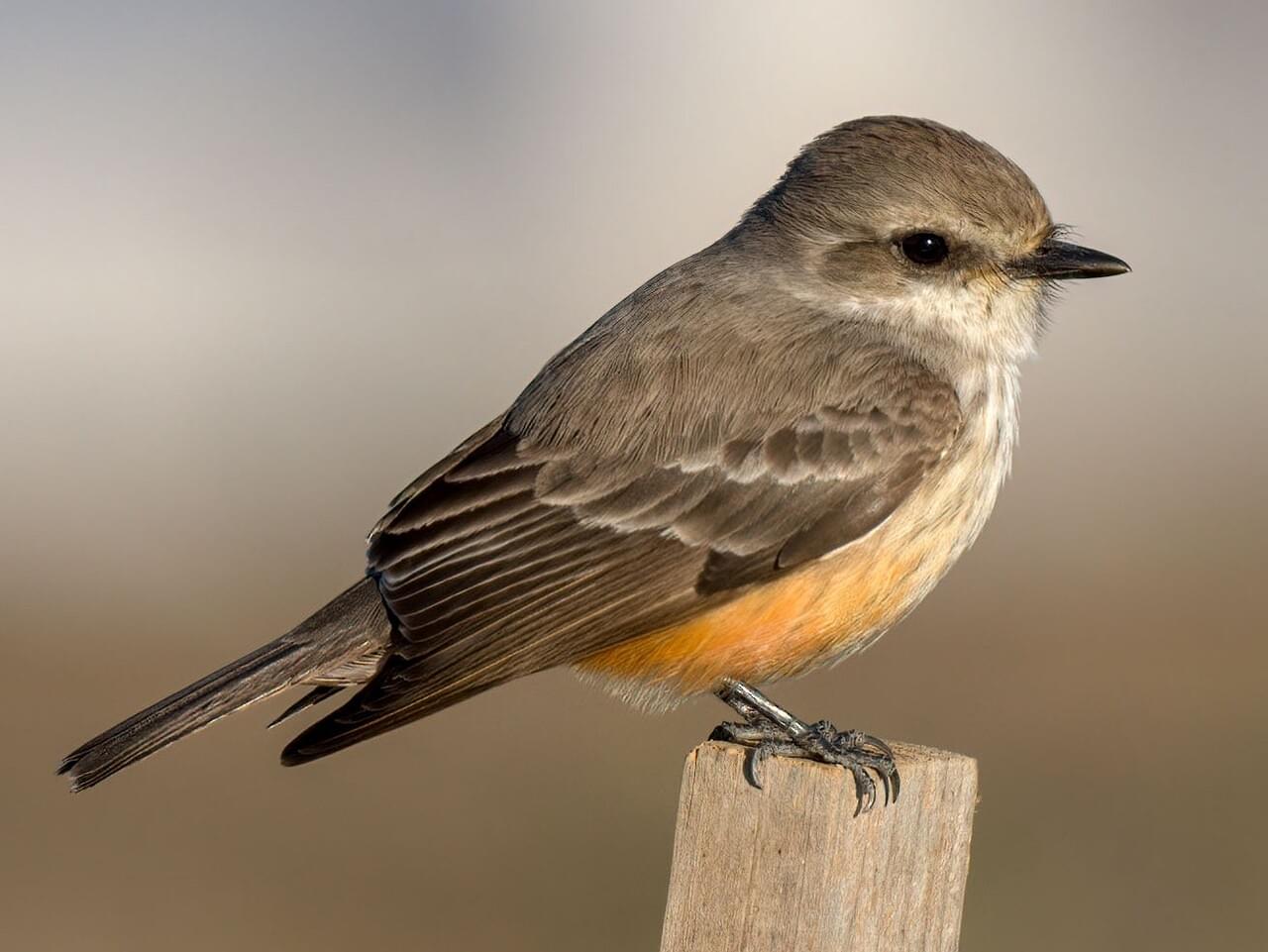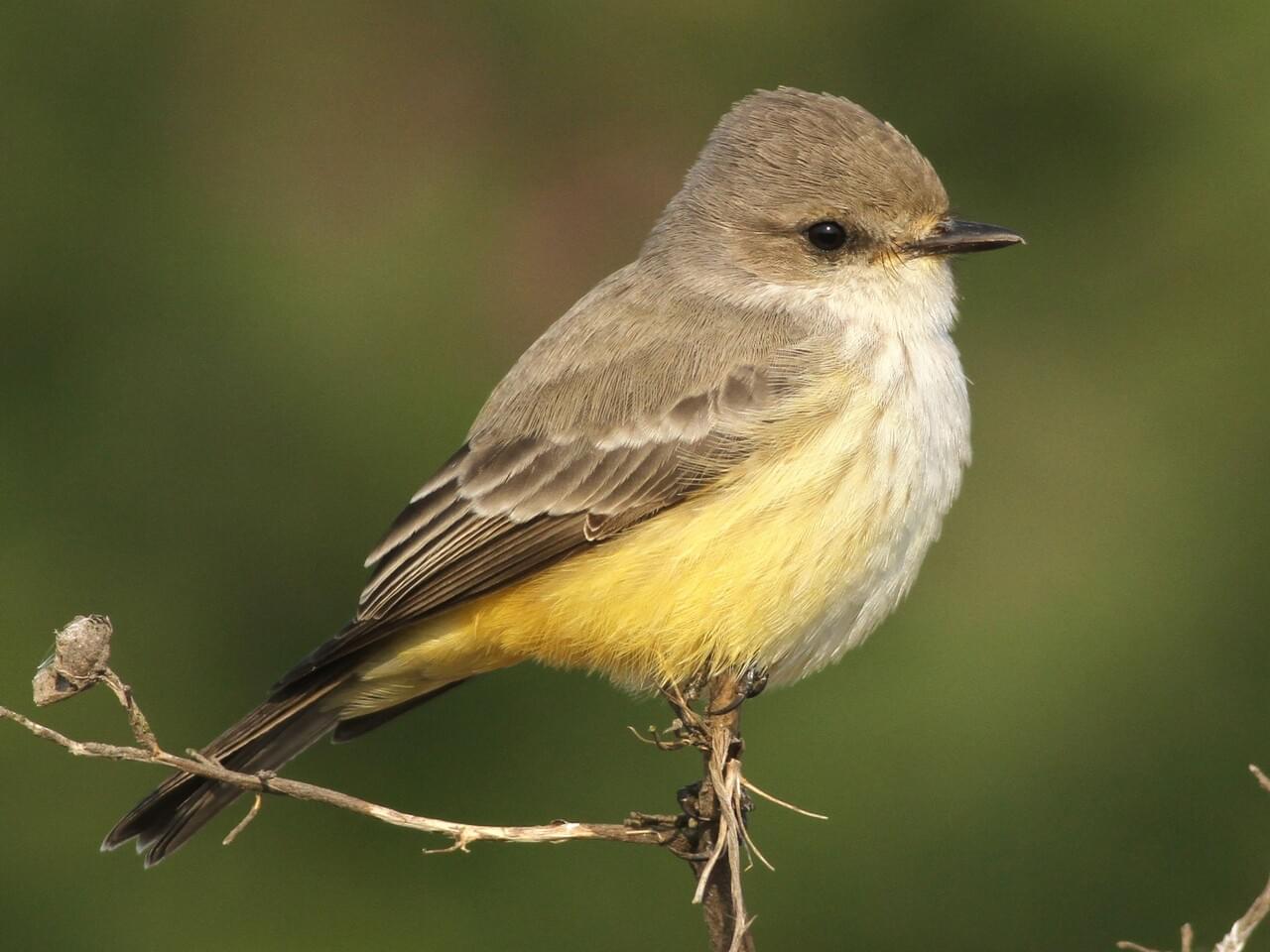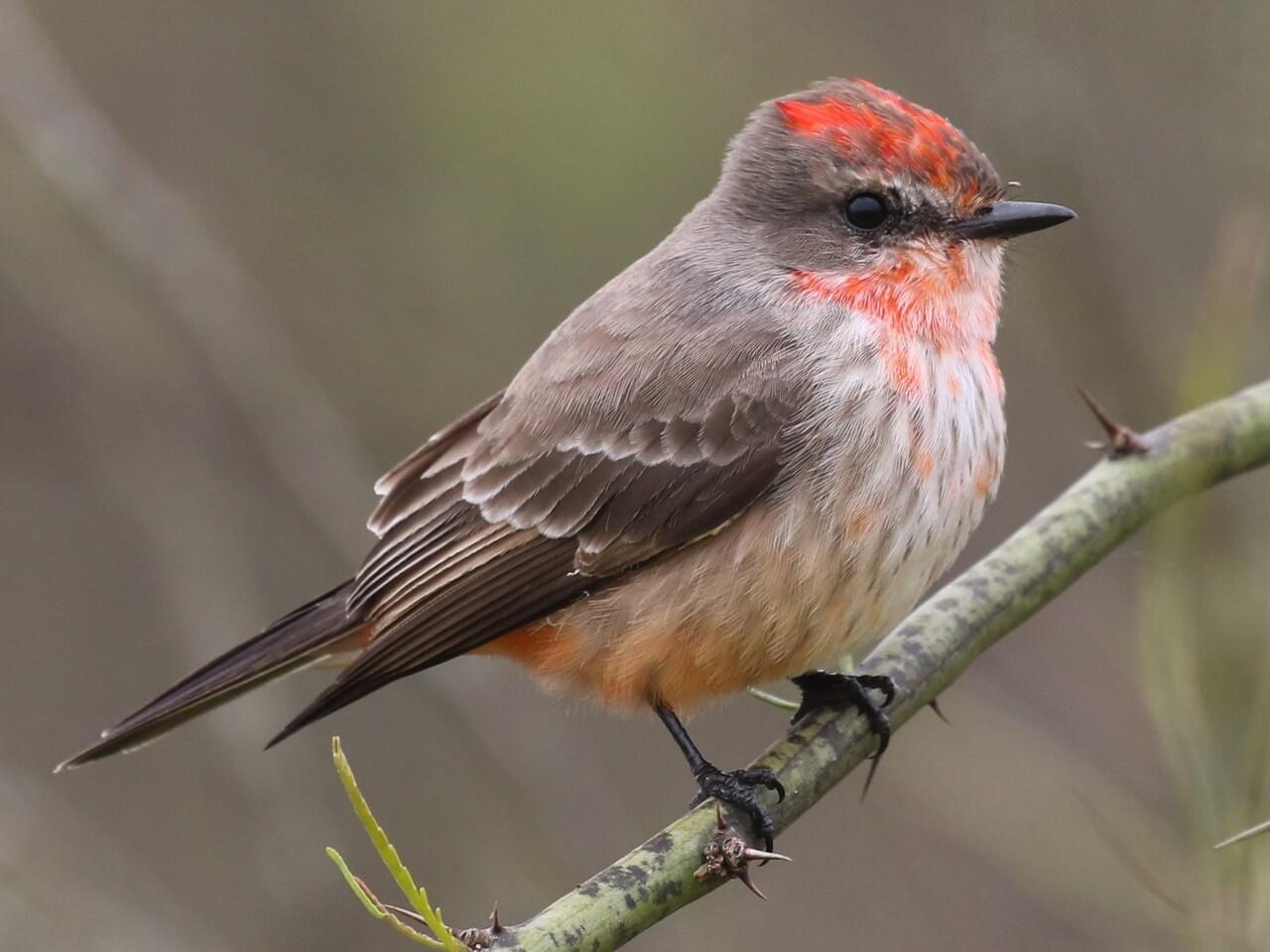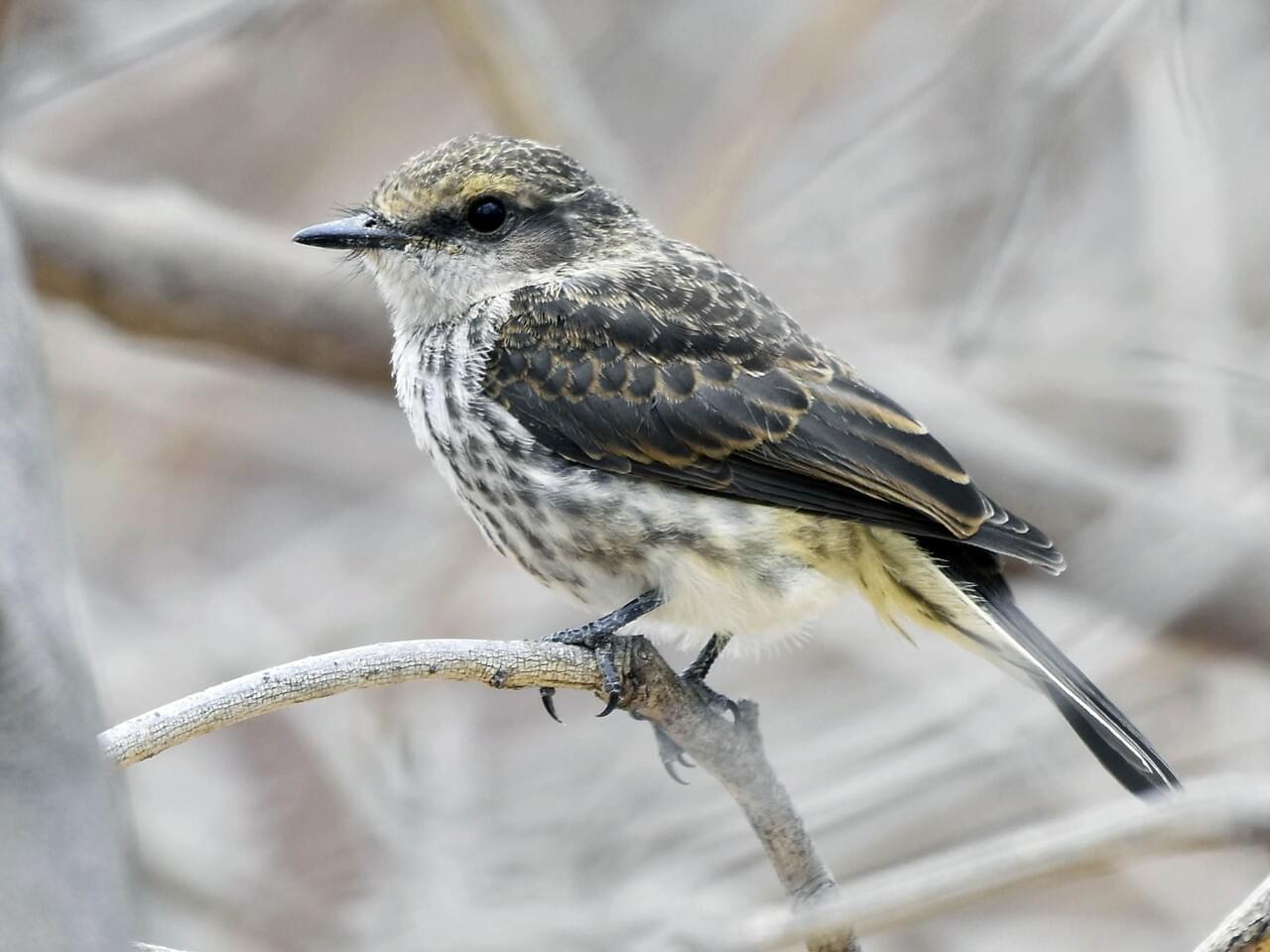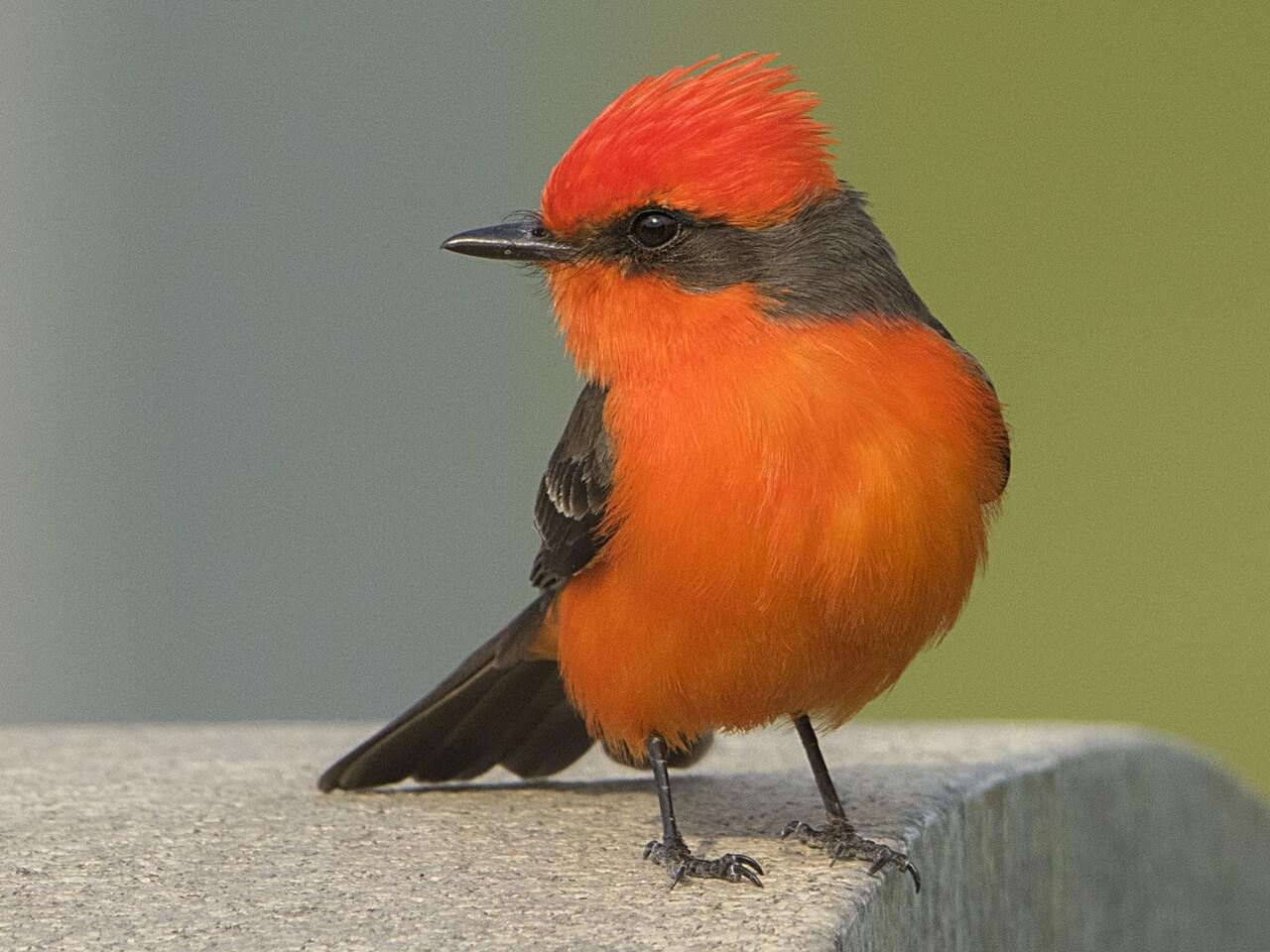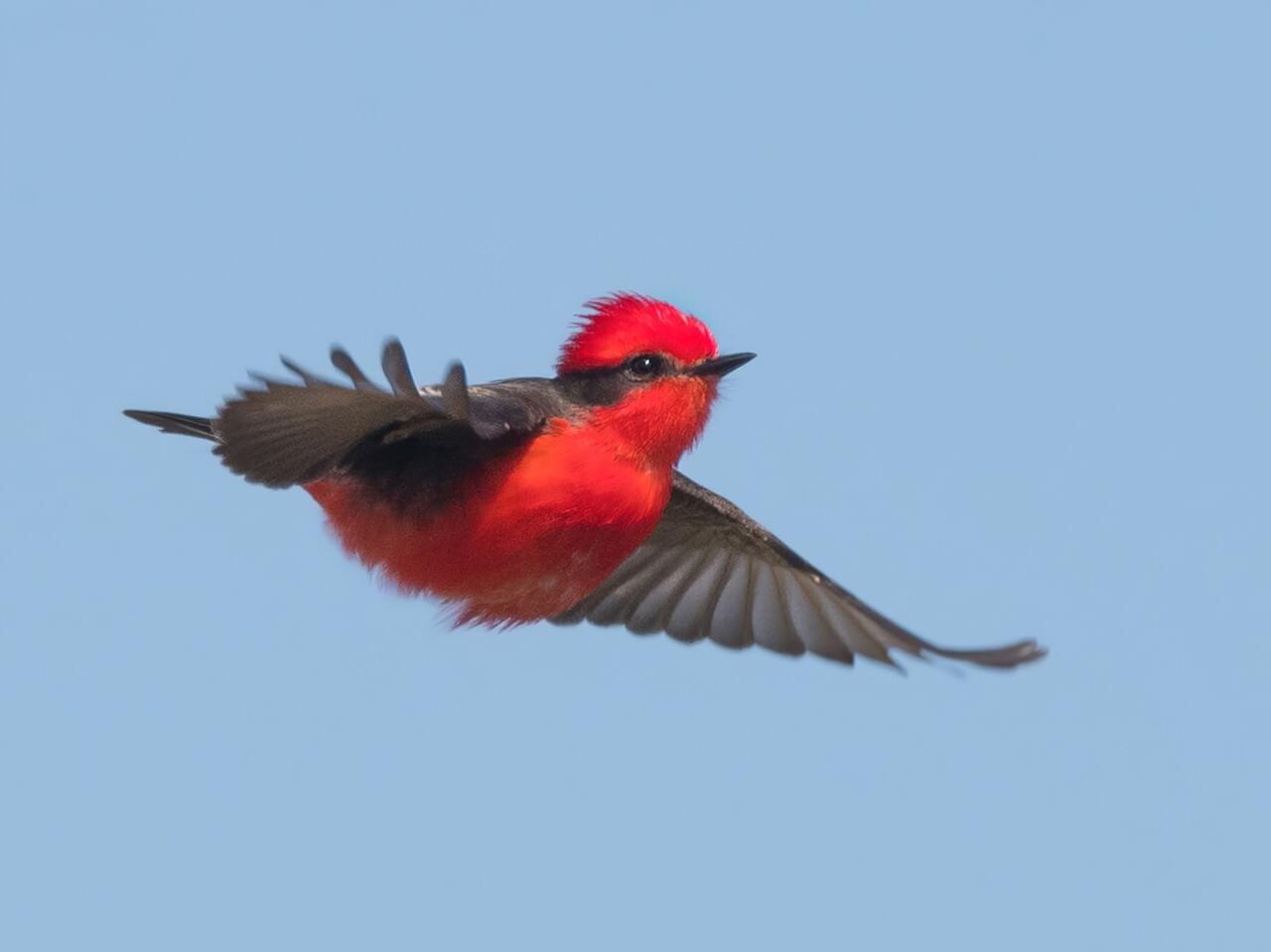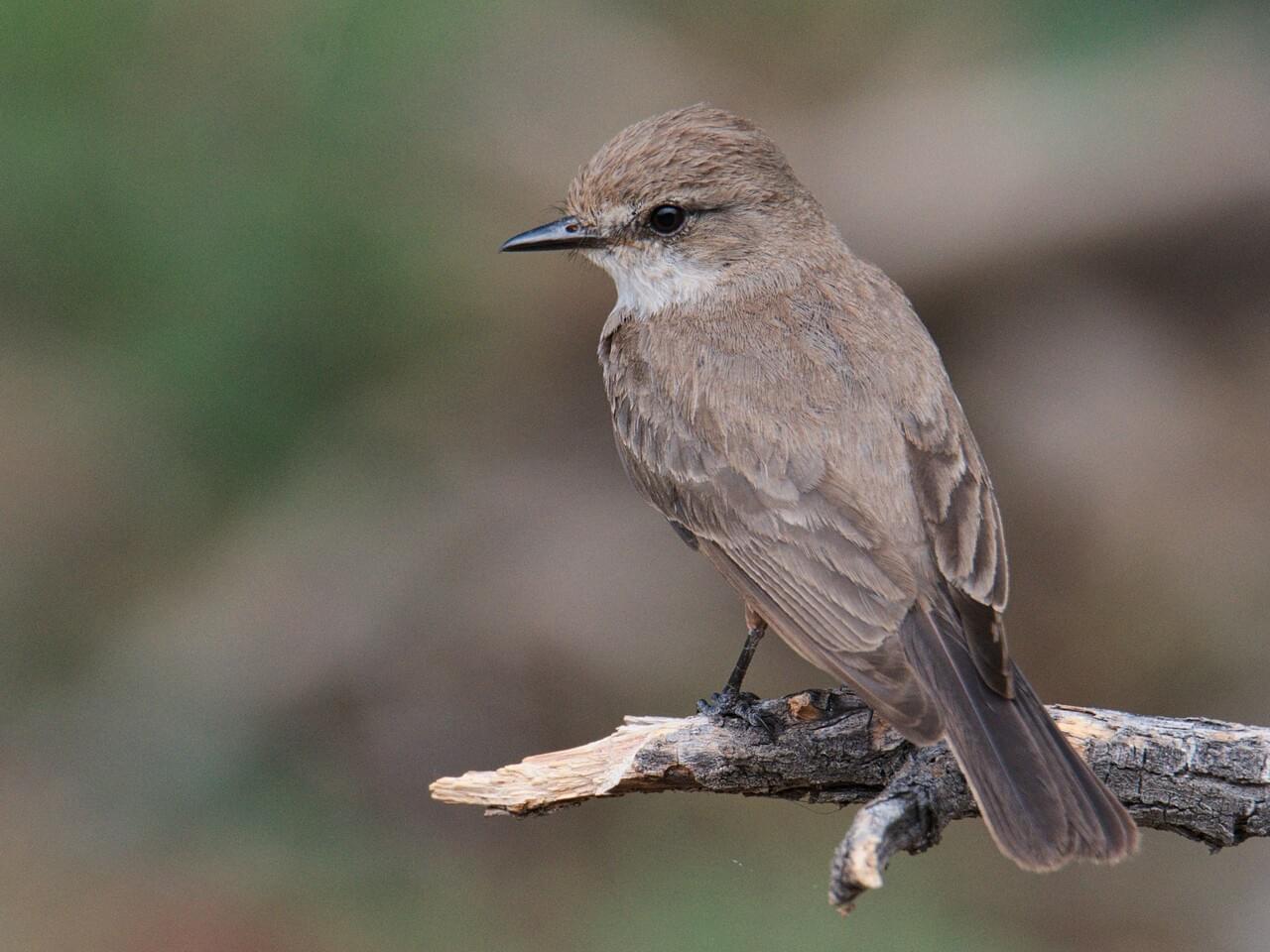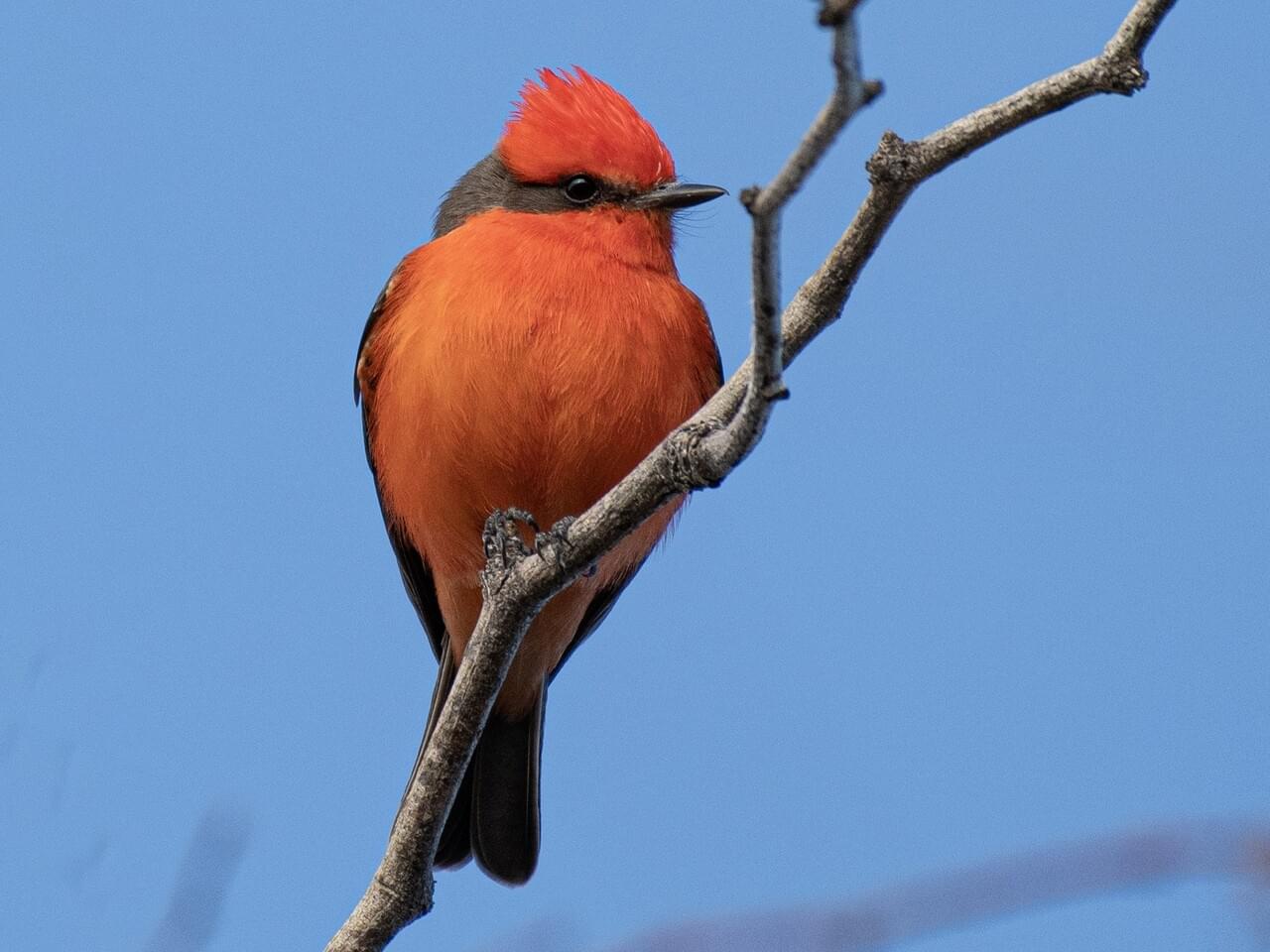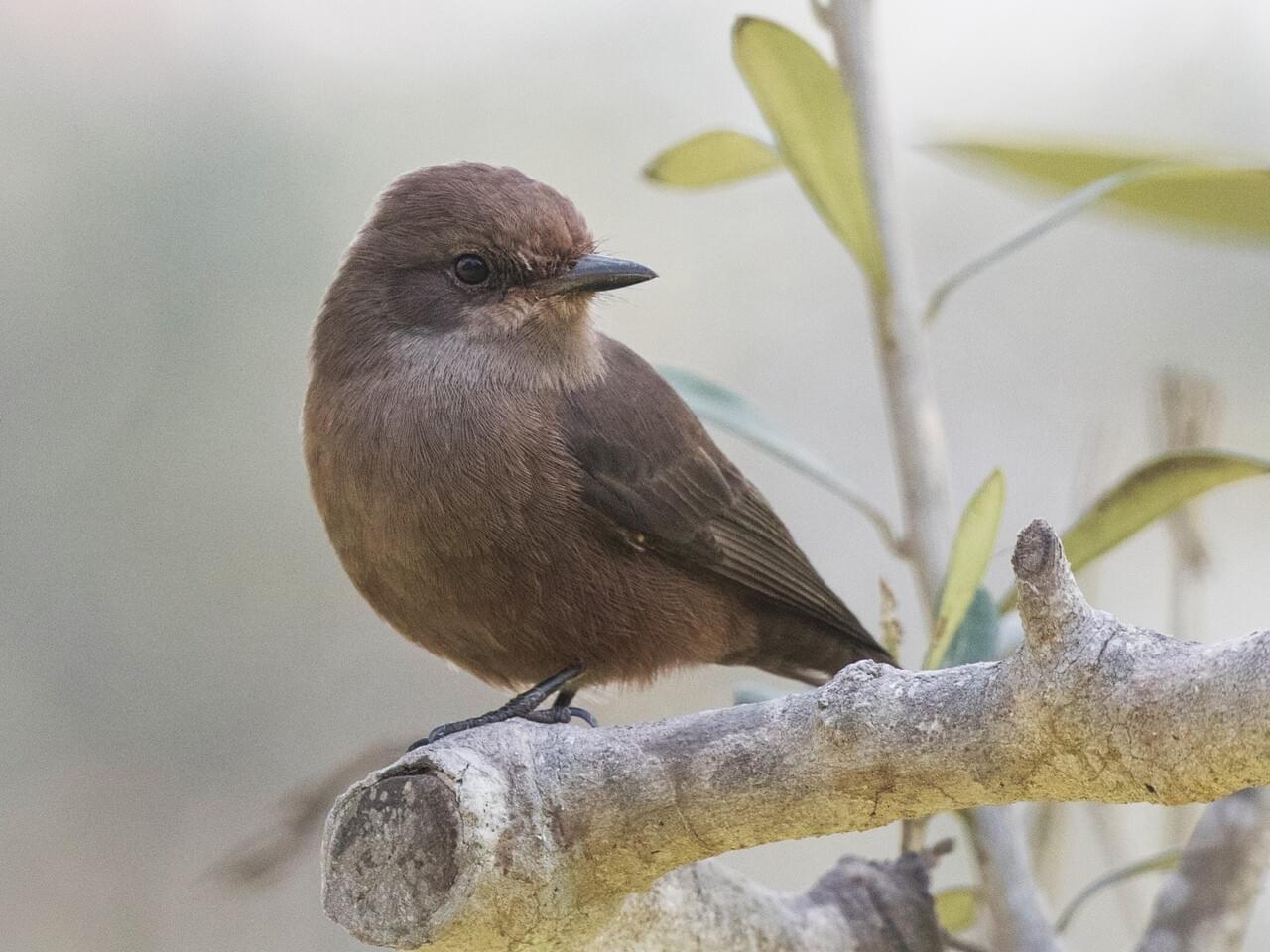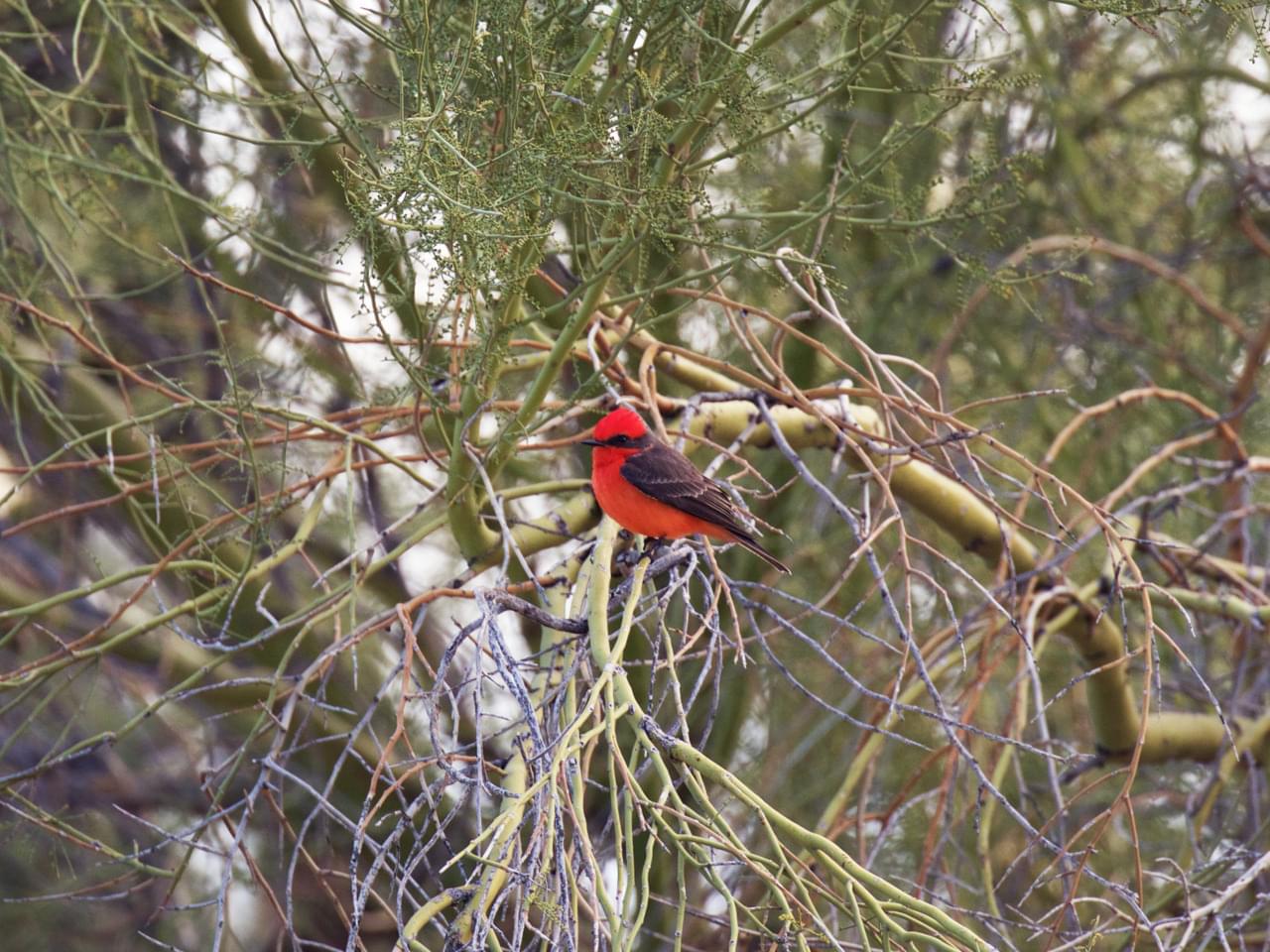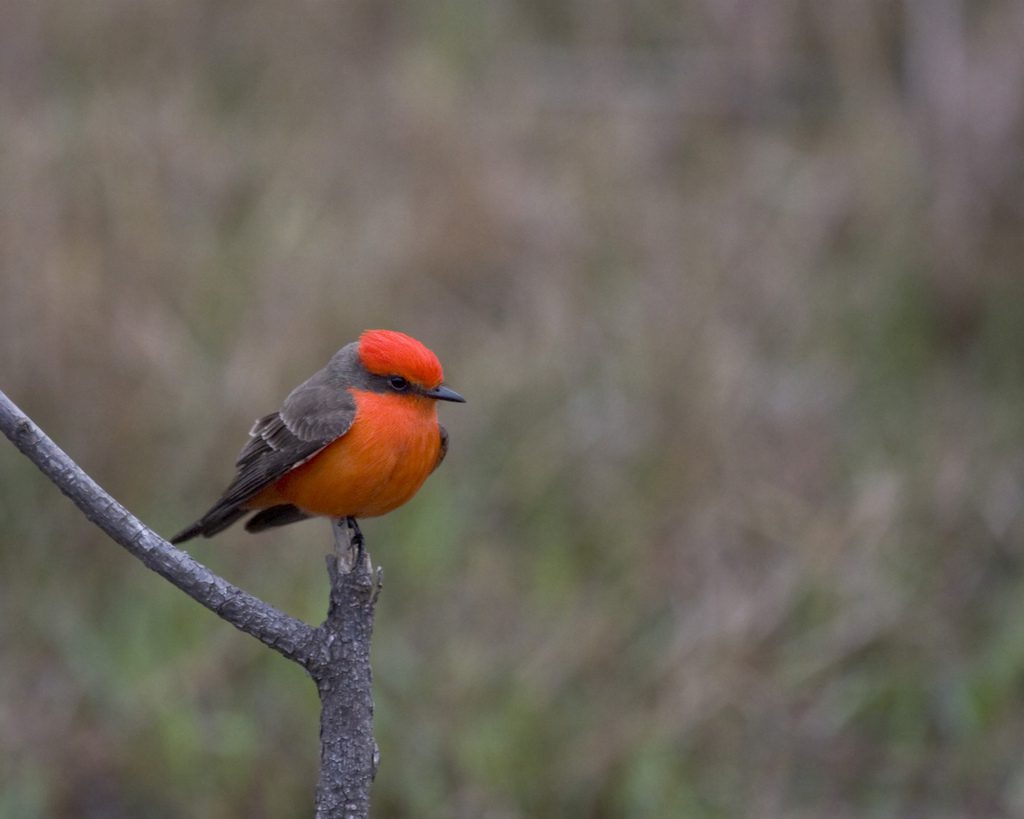 Photo ©
Stephen Pollard
Photo ©
Stephen Pollard
Vermilion Flycatcher
Regional Species
A feathered ember in a desert landscape, the male Vermilion Flycatcher is exactly what its name says: a brilliant red bird that hawks flying insects from conspicuous perches on shrub tops and fences. Females are delightful in their own way, subtle gray-brown birds with a warm salmon-red blush to the underparts. Though they barely reach the southwestern U.S., this species is common all the way through Central America and much of South America. Watch for the male's high, fluttering flight display and listen for his twittering display song.
Range
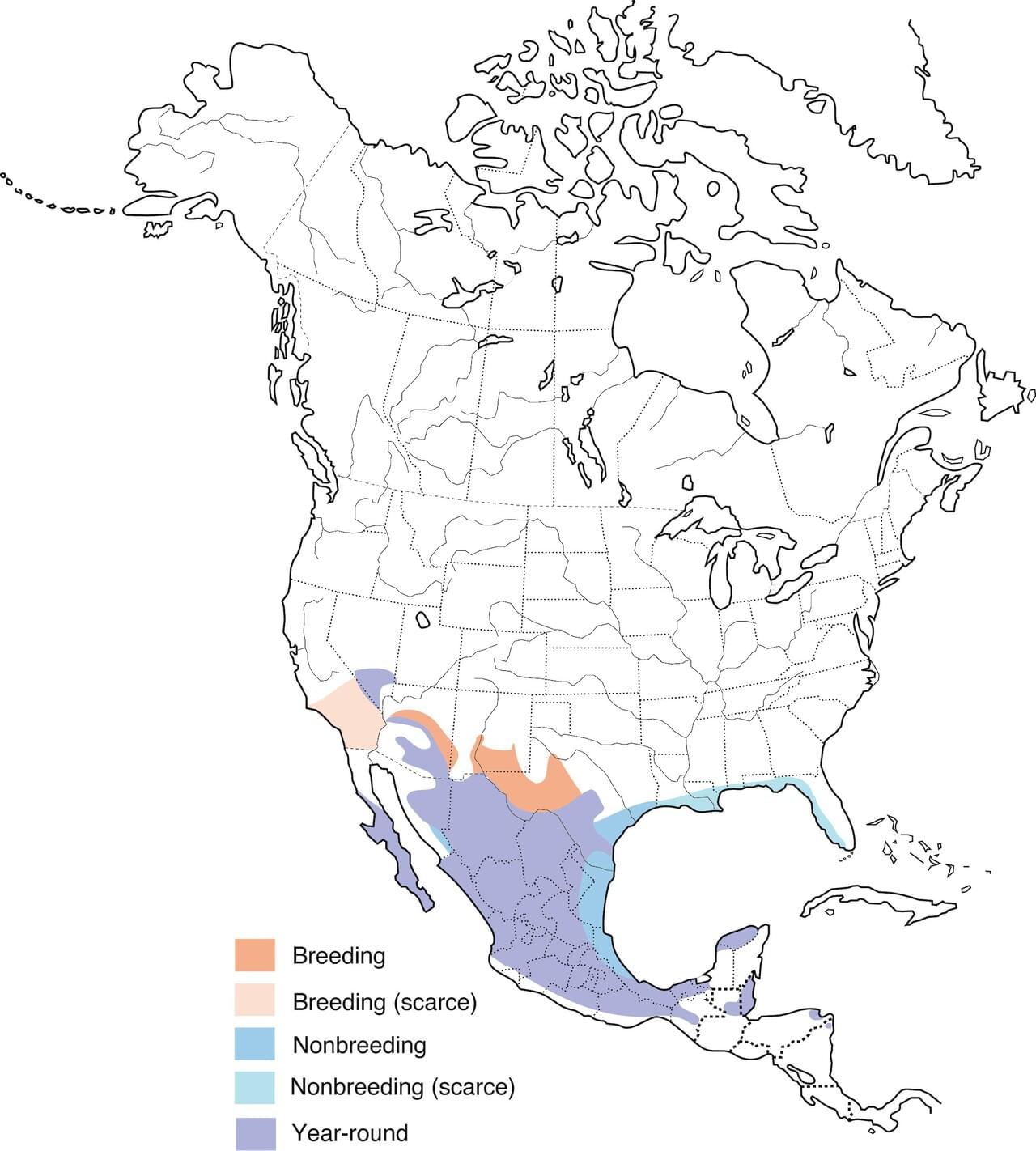
Habitat
In all seasons, the Vermilion Flycatcher can be found in any open country in the American Southwest, including arid scrublands, farmlands, deserts, parks, and canyon mouths. They are especially reliant on stream corridors within the scrub ecosystem, in areas where willow, sycamore, cottonwood, mesquite, and other bottomland trees grow. South of the U.S. they occur in similar open, shrubby country in tropical lowlands and to as high as 10,000 feet elevation.
Food
Vermilion Flycatchers eat mostly flying insects. They capture insects on the wing by flying suddenly out from an exposed perch. These foraging flights are often short and direct, and often involve a swift swoop that takes them in a looping circle out and back to the same perch. Typically feeds within about 10 feet of the ground. Carries larger prey such as grasshoppers and butterflies back to the perch, whacks them against the perch to subdue and soften them before eating. Other prey include honeybees, beetles, and crickets.
Behavior
Males aggressively guard their territory from other Vermilion Flycatchers as well as other birds using a warning posture with tail and crest erect. While on territory, males perform an elaborate flight display to attract females in which they rise 60–100 feet above surrounding vegetation, alternately gliding and flapping with shallow wingbeats while singing a twittering flight song. If interested, the female then joins the male as they inspect potential nest sites, often with the male bringing insects to the female. Pairs are socially monogamous, though mating outside the pair (extra-pair copulation) is not uncommon. The female incubates the eggs while the male brings food, and both parents feed the chicks. When not breeding, Vermilion Flycatchers are typically solitary birds, though small flocks of males may form in the winter.
Nesting
A shallow, somewhat loosely constructed cup of small twigs, grasses and empty cocoons bound together with spiderweb. It is often decorated (camouflaged) with small bits of lichen.
Appearance
Typical Sound

© Bob McGuire / Macaulay Library
Adult Description
- Small flycatcher.
- Male has bright red or red-orange head and underparts.
- Female is dull grayish brown above, with pale red under the tail and a streaked whitish chest.
Male Description
Crown, lower face, and underparts brilliant scarlet or vermilion. Upperparts, nape, and mask through the eye blackish brown. Wings and tail dark blackish brown. Outer tail feathers may be edged with white. Narrow white tip on tail.
Female Description
Upperparts grayish brown. Underparts white near throat, becoming pale salmon or orangish under the tail. Breast, sides, and flanks streaked with grayish brown. Dull white eyebrow stripe and gray line through eyes. Wings and tail dark grayish brown. Some may have a few pinkish red feathers on the crown or breast.
Immature Description
Juvenile with scaly grayish back, white underparts, white outer tail feathers, and dusky spotting across chest. Immature male resembles adult female, with more extensive reddish color under tail and on flanks and variable amounts of dull red mottling. Immature female is similar to adult female, but with yellow, not reddish, under the tail.
Plumage Photos
Similar Species
- Say's Phoebe has reddish wash on flanks and tail, but lacks the whitish, streaked chest of female Vermilion Flycatcher.
Did you know?!
- The breeding male Vermilion Flycatcher spends about 90 percent of the day perched.
- Twelve subspecies of Vermilion Flycatcher are recognized, including a race with a dark morph that ranges from western Peru to northern Chile. Both male and female of this morph are dark all over, with some males having a few red feathers on the head, and some females having a pinkish wash under the tail. About half of the Vermilion Flycatchers in Lima, Peru are the dark morph, but the proportion decreases as one goes further southward.
